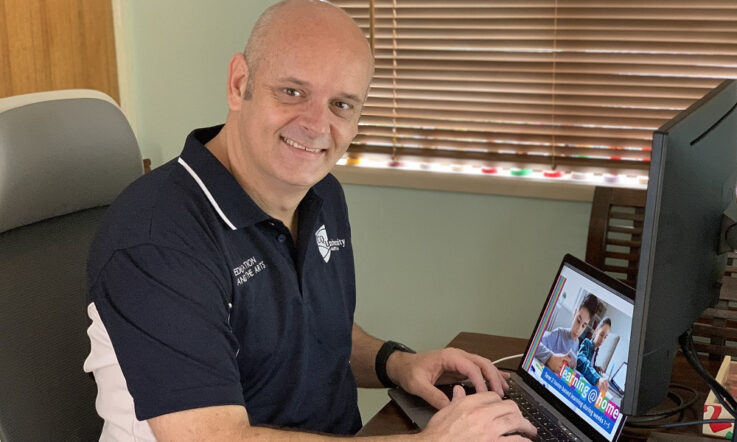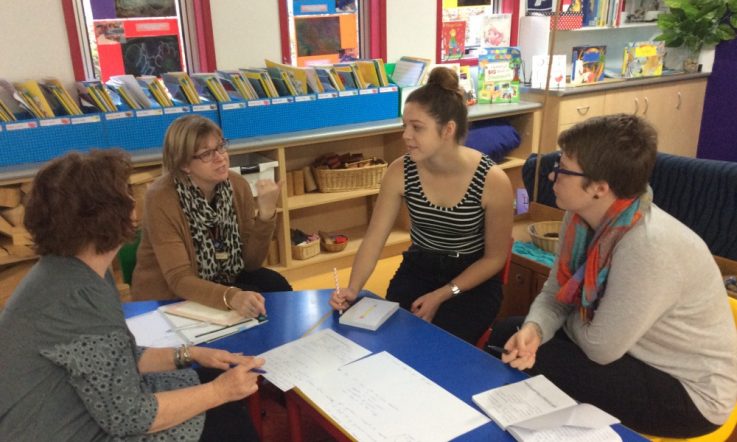Researchers at the University of Wollongong in New South Wales have been working with teachers and school leaders around Australia to better understand what motivates them to be involved in school-university partnerships. In today’s article, PhD student Corinne Green and Associate Professors Sharon Tindall-Ford and Michelle Eady share some of their study findings.
Close connections between schools and universities have been advocated by education researchers and policymakers globally (Darling-Hammond, 2017; Teacher Education Ministerial Advisory Group, 2014).
The way that collaborative school-university partnerships within initial teacher education are implemented, and the associated benefits and challenges, have been explored in research literature (Green et al., 2020). But, what motivates school staff to be involved in these partnerships?
To understand more, we spoke with 23 teachers and leaders at four schools around Australia. The participants in our study demonstrated that establishing a partnership that suits your school’s needs can enhance the quality of teachers, university programs and educational research, with far reaching impacts on students now and into the future. Here is an overview of each school’s partnership experience and some of the comments from staff (institutions and schools have been de-identified).
Grevillea Primary School and Grey Gum University
Grevillea Primary School is a government K-6 school in a major city in Queensland. It has partnered with Grey Gum University since 2014, when the school executive approached a university academic to discuss their concerns about the career readiness of pre-service teachers. The activities of this partnership include pre-service teachers volunteering at the school, and videos of school staff discussing their practices being incorporated into the university’s initial teacher education programs.
Grevillea PS staff involvement in the partnership is grounded in their commitment and sense of moral responsibility to the teaching profession. As one teacher declared: ‘It’s our obligation to make sure that the next generation of teachers… are good, and they’ve got the skills they need.’
The collegial school culture is, as the principal noted, linked to their ‘strong pedagogical framework,’ with another teacher making clear that because of this pedagogical framework ‘we see that responsibility [to mentoring] not just in our own staff, but then for the… next generations [of teachers] coming through.’ Ultimately, as the in-school coordinator stated, the partnership ‘is about outcomes for kids.’
Kangaroo Paw High School and Koala Fern University
Kangaroo Paw High School is a large government Year 7-12 school located in a major city in Queensland that has partnered with four local universities, including Koala Fern University. This partnership was initiated five years ago when the deputy principal of the school approached the university to discuss to the school’s ongoing need for staff. The aim of the partnership is to support pre-service teachers, employ graduate teachers, and advance their early teaching careers.
Within the partnership, the school hosts 200 pre-service teachers each year (70 from Koala Fern University) for Professional Experience placements, supports early career teachers to mentor pre-service teachers, has developed a community of practice among senior teachers and university academics, and provides advice and feedback into initial teacher education programs through an industry advisory group.
Kangaroo Paw HS staff’s involvement is aligned with the school’s deliberate strategy related to ongoing staffing needs. The staff have a clear desire to contribute to the continual improvement of the teaching profession, with one teacher commenting that the partnership is ‘very mutually beneficial. It helps grow our profession, it keeps people [at the school and at the university] on their toes and up to date with things that are happening.’ As another teacher mused: ‘the beauty of [the school] being so big, it does have the opportunity’ to implement activities across the whole career spectrum.
Eucalyptus Primary School and Emu-bush University
Eucalyptus Primary School is a government K-6 school located in an inner regional area of Tasmania that has partnered with Emu-bush University. The dynamic connections between these two institutions have been sustained over three decades. The current partnership encompasses a range of activities, including pre-service teachers developing and teaching lessons to school students on both the school and university grounds, and an annual Harmony Week event.
Eucalyptus PS staff’s involvement is sustained by their established school culture and supportive leadership. As the school principal reflected: ‘There’s definitely a culture of, “This is what we do.”’ They are driven by a desire for their students to develop aspirational goals of further education, with the in-school coordinator noting that the partnership makes university more familiar and accessible, so that school students now say ‘When I go to uni’ rather than ‘if’.
Being able to immerse pre-service teachers in the complexities of the teaching profession throughout their initial teacher education was also a motivating factor, as one teacher made clear: ‘It’s really because we want them to be good when they [enter the workforce]. There’s nothing worse than being out unprepared.’
Bottlebrush Independent School and Banksia University
Bottlebrush Independent School is a non-government K-12 school located in a major city in New South Wales. The K-6 section of the school has partnered with Banksia University. The partnership began seven years ago when an academic and teacher began discussing how they could facilitate pre-service teachers to spend more time in classrooms. Within the partnership, pre-service teachers volunteer at the school, and some university tutorials are led by school staff, in addition to the deputy principal providing professional learning to pre-service teachers during Professional Experience placements.
Bottlebrush Independent School staff’s involvement is sustained by a school culture that the in-school coordinator acknowledged was ‘highly supportive’ of the partnership. The benefits that school staff have witnessed also motivate involvement, with one teacher explaining that the partnership ‘encourages best practice’ from teachers because ‘you have someone else that you want to show the best of the best to.’ Taking a broader view, the deputy principal stated: ‘It’s not just about some benefit to [this] school. You have to look at it as the profession.’
Conclusion
The teachers and school leaders in our study have made clear that their motivation to partner with their local university is intrinsically connected to their commitment to the teaching profession. They firmly believe that those in the profession have a responsibility to it, and we suspect that you, as a reader of Teacher, also hold this view! School-university partnerships support the whole spectrum of the profession, from pre-service teachers to in-service teachers to educational researchers.
We found that, while there were challenges encountered in all four partnerships – including the time required to implement activities, difficulties with the timing of those activities, and communication issues between institutions – in each case these were outweighed by the benefits that the teachers and leaders identified at the individual-, school-, and profession-wide level.
Importantly, each partnership embraced a balance of power and shared respect, which participants noted was key to their involvement. Supportive school cultures and strong leadership provided the foundations for these partnerships to overcome any barriers.
If you are interested in developing a school-university partnership, we encourage you to start a conversation with people at your local university.
References
Darling-Hammond, L. (2017). Teacher education around the world: What can we learn from international practice? European Journal of Teacher Education, 40(3), 291-309. https://doi.org/10.1080/02619768.2017.1315399
Green, C. A., Tindall-Ford, S. K., & Eady, M. J. (2020). School-university partnerships in Australia: A systematic literature review. Asia-Pacific Journal of Teacher Education, 48(4), 403-435. https://doi.org/10.1080/1359866X.2019.1651822
Marzano, R. J. (2007). The Art and Science of Teaching: A comprehensive framework for effective instruction. ASCD.
Teacher Education Ministerial Advisory Group. (2014). Action Now: Classroom ready teachers. Australian Government Department of Education.
As a school leader, how could partnering with a local university support teaching staff and student learning in your own context?
What could some of the barriers, benefits and challenges be to working with university educators and pre-service teachers?
If you’re already involved in a school-university partnership, what were the initial aims? Are these being achieved? How often do you review the partnership and its progress?



